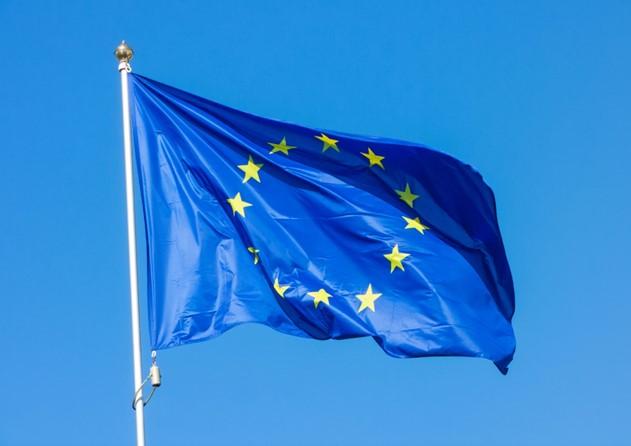Our Competition Law Briefing Special Edition provides an overview of the reforms that have been introduced by the Merger Simplification Package adopted by the European Commission, aiming to simplify and streamline EU merger review procedures. In addition, the main updates on the Motor Vehicle Block Exemption Regulation and its accompanying Guidelines are outlined below, in light of continuous and rapid technological developments in the motor vehicle sector.
Streamlining EU Merger Review: Simplified Procedures and Revised Regulations Adopted by European Commission
A. Introduction
B. Extension of Simplified Procedures’ Ambit to New Categories of Transactions
C. Flexibility Clause
D. Safeguards and Exclusions
E. Streamlining of Simplified and Non-Simplified Cases
F. Electronic Transmission of Documents
G. Closing Remarks on Merger Simplification Package
Motor Vehicle Block Exemption Regulation Update
A. Introduction
B. Technical information in the Digital Era
Streamlining EU Merger Review: Simplified Procedures and Revised Regulations Adopted by European Commission
A. Introduction
1. On 20 April 2023, the European Commission (the Commission) adopted a new set of rules in an attempt to simplify the review procedures for concentrations under the EU Merger Regulation and enhance efficiency of the overall procedure.
2. The package includes:
a. a revised Merger Implementing Regulation 2023/914 (the Implementing Regulation);
b. a Notice on Simplified Procedure (the Notice); and
c. a Communication on the transmission of documents.
The new rules were published in the Official Journal on 5 May 2023 and are part of the Commission’s priority to reduce the administrative burden. They will apply as of 1 September 2023.
3. The primary objective of the Merger Simplification Package is to streamline and broaden the scope of application of the Commission's review process for uncomplicated mergers, commonly referred to as ‘simplified cases’. Additionally, it aims to limit the quantity of information required for notifying transactions in all cases and to optimize the transmission of documentation.
4. An overview of the most important changes brought about by the Merger Simplification Package is presented under Sections B-G below.
B. Extension of Simplified Procedures’ Ambit to New Categories of Transactions
1. Two new categories of transactions that can benefit from simplified treatment are introduced. Specifically, vertical merger cases will come under the simplified procedure where:
a. the individual and/or combined upstream market shares of the merging parties are below 30% and their combined purchasing share in the downstream market is below 30%;
b. the individual and/or combined upstream and downstream market shares of the parties are below 50%, the market concentration index (HHI delta) is below 150 and the smaller party in terms of market share is the same in the upstream and downstream markets.
C. Flexibility Clause
1. The updated Notice confers upon the Commission the discretion to apply the simplified procedure to certain other cases as well, even if they do not come under the categories for such treatment, upon request of the parties. This option (referred to as the flexibility clause) entitles the Commission to decide to review under the simplified procedure transactions leading to:
a. horizontal overlaps, whereby the combined market share of the parties remains below 25%;
b. vertical relationships, whereby the individual and combined market shares of the parties in the upstream and downstream markets are lower than 35%;
c. vertical relationships, whereby the individual and combined market shares of the parties are lower than 50% in one market and, at the same time, do not exceed 10% in the other vertically related market; and
d. joint ventures, with turnover and assets below €150m in the European Economic Area (EEA).
D. Safeguards and Exclusions
1. The updated procedures provide for a more detailed non-exhaustive list of examples of concentrations which, although they satisfy the general requirements for simplified review or can benefit from the flexibility clause, may be exempted from the simplified procedure and be investigated by the Commission under the normal merger review process.
2. This includes, amongst other, situations where:
a. defining the relevant markets is challenging;
b. there are factors that could give rise to competition concerns despite the absence of significant horizontal overlaps or vertical relationships between the parties;
c. one of the parties holds a non-controlling stake in a company active in a market where another merging party is active;
d. a third party has expressed substantiated competition concerns for the merger; or
e. a Member State has requested referral of the transaction to the Commission.
E. Streamlining of Simplified and Non-Simplified Cases
1. The Implementing Regulation introduces a new notification format (referred to as the ‘tick-the-box’ Short Form CO) for simplified cases. This new form features primarily multiple-choice questions and tables and streamlined queries regarding both the jurisdictional and the substantive evaluation of cases.
2. With the same objective to simplify procedures, the Notice provides for a new ’super-simplified’ procedure option, whereby the parties are invited to notify directly without engaging in any pre-notification discussions with the Commission. This procedure applies to:
a. transactions with no horizontal overlaps or vertical relationships between the parties; and
b. the formation of joint ventures with no current or expected turnover or assets within the EEA.
3. For non-simplified cases, an amended notification form (Form CO) is introduced, whereby the information requirements in the notification form are updated and clarified. The main points of the new Form CO include:
a. clearer information on the option of the parties to ask for a waiver from the provision of certain information;
b. the introduction of tables with respect to affected markets’ data;
c. the inclusion of questions on pipeline products; and
d. the removal of certain information previously required.
F. Electronic Transmission of Documents
1. On the transmission of documents to and from the Commission, the reform establishes a fully digital system for the submission of filings and supporting documentation as the default option for the forthcoming procedures.
G. Closing Remarks on Merger Simplification Package
1. The Merger Simplification Package is a welcome step forward, in line with the Commission’s broader strategy to improve allocation of resources, reduce unnecessary administrative constraints and focus on complex cases.
2. The reforms introduced represent a positive development that should allow parties involved in unproblematic transactions to benefit from a speedier and easier notification process.
3. Overall, we expect the new rules to be helpful in future M&A transactions.
Motor Vehicle Block Exemption Regulation Update
A. Introduction
1. On 17 April 2023, the Commission announced the prolongation of the Motor Vehicle Block Exemption Regulation 461/2010 (MVBER) for an additional five-year period, extending its validity until 31 May 2028. In addition, the Commission adopted a Communication updating the Supplementary Guidelines accompanying the MVBER.
2. The extension of the MVBER, along with the update of the Supplementary Guidelines, will enable the Commission to respond promptly to new market developments, including those resulting from the digitization, electrification and emerging mobility patterns of motor vehicles, while allowing the continuation of the pro-competitive effects resulting from the implementation of the MVBER.
3. The MVBER provides safe harbor from the prohibition laid down in Article 101 of the TFEU to vertical agreements in the motor vehicle aftermarkets (involving the purchase, sale or resale of spare parts or the provision of repair and maintenance services for motor vehicles) that meet specific conditions. Prior to its extension, the MVBER was due to expire on 31 May 2023.
B. Technical Information in the Digital Era
1. The updated Supplementary Guidelines expand the notion of technical information that must be provided by car suppliers to independent operators to cover any potentially essential input for repair and maintenance activities, including explicitly vehicle-generated data. Therefore, to comply with Article 101 of the TFEU, both authorized and independent repairers should have access to such data on an equal footing.
2. To determine whether a particular item of technical information constitutes an essential input for repair and maintenance activities and whether withholding this item from independent repairers would constitute an infringement of Article 101 of the TFEU, the following should be considered:
a. whether withholding the item in question will have an appreciable impact on the ability of independent operators to carry out their tasks and exercise a competitive constraint on the market (ie the item is essential for repair and maintenance);
b. whether the item is made available to members of the supplier’s authorized repair network (if so, it should also be made available to independent operators on a non-discriminatory basis); and
c. whether the item concerned will ultimately be used for the repair and maintenance of motor vehicles, or for another purpose such as for the manufacturing of spare parts or tools.
3. In case of withholding of an item that is an essential input for repair and maintenance services on security grounds, it should be examined whether this is a proportionate means to address the security concerns at issue or whether other less restrictive means suffice.
4. Overall, the existing principles for the provision of technical information, including tools and training necessary for repair and maintenance, have been extended to cover data generated by vehicle sensors. At the same time, vehicle suppliers must expressly apply the principle of proportionality when deciding whether to withhold inputs, such as vehicle-generated data, from independent operators. Otherwise, unreasonably withholding essential input could bring Article 102 of the TFEU on the abuse of dominance into play.
Click here to download the Briefing.





